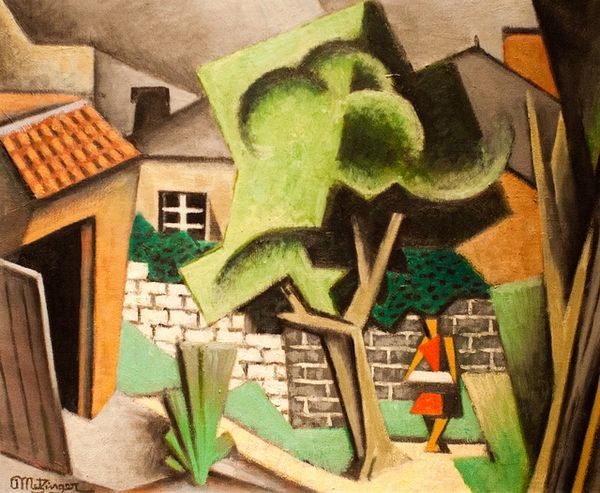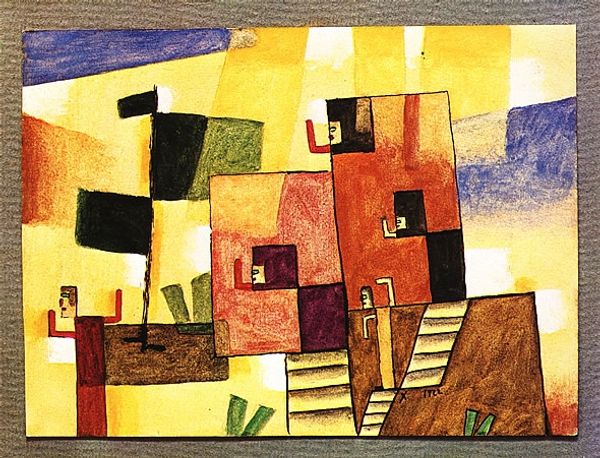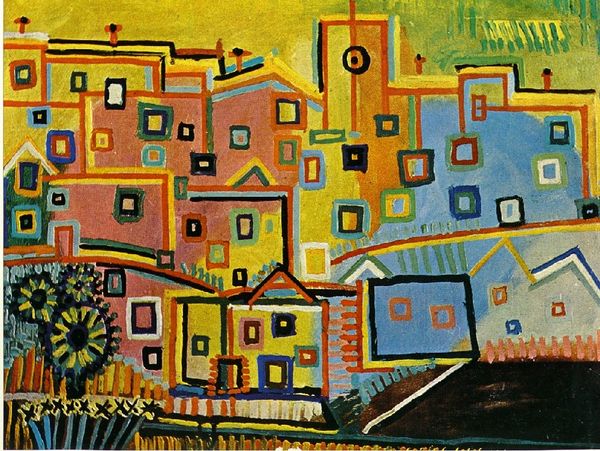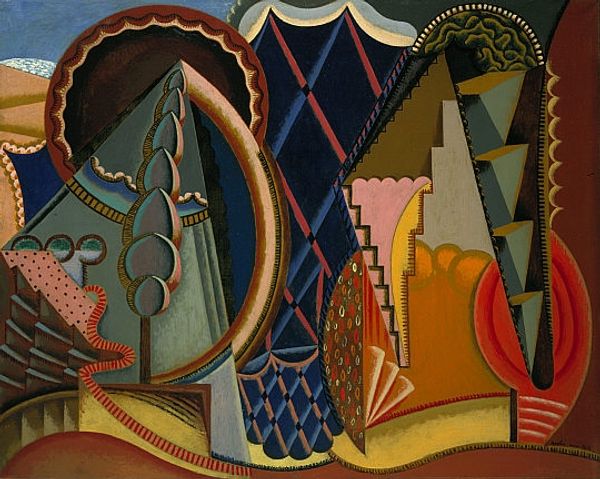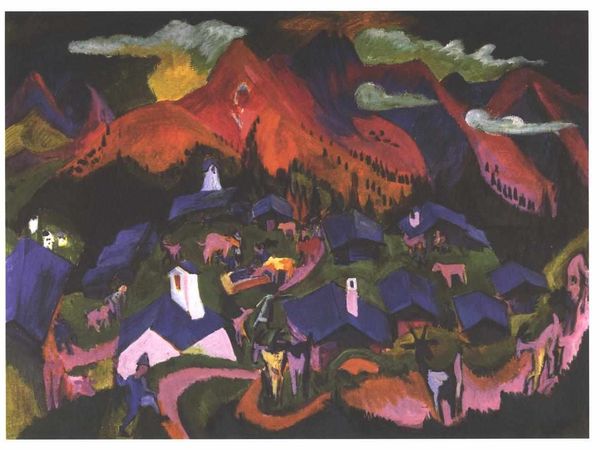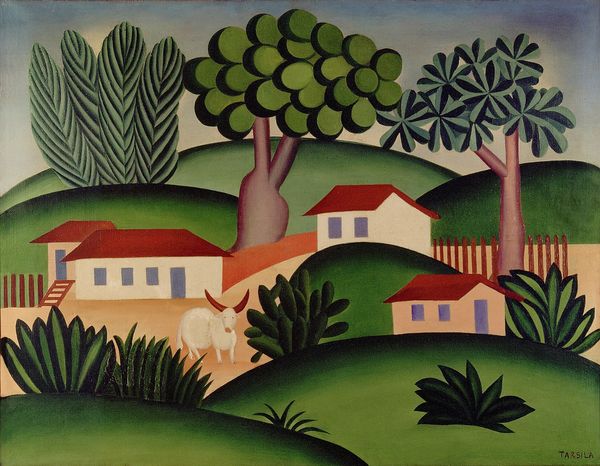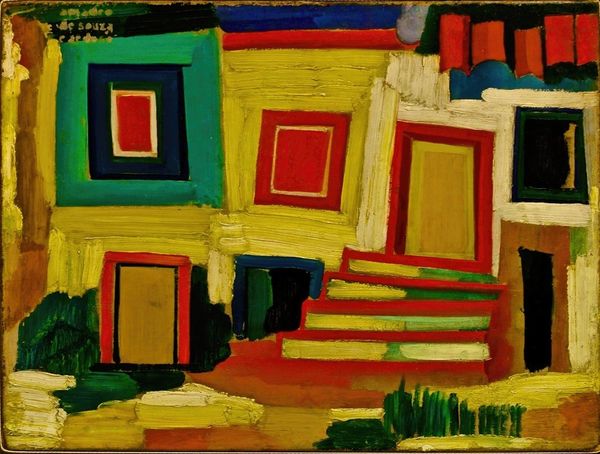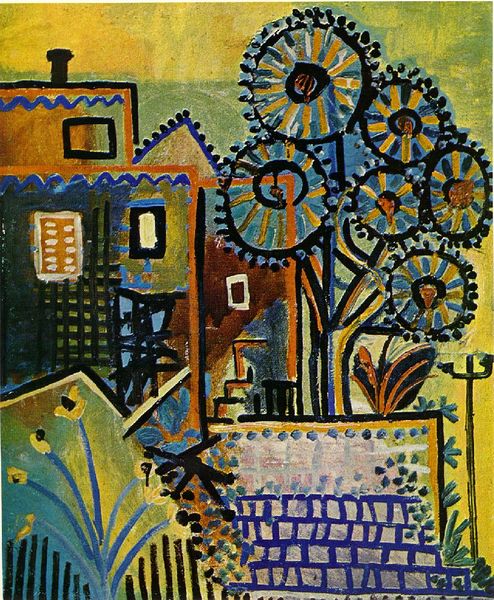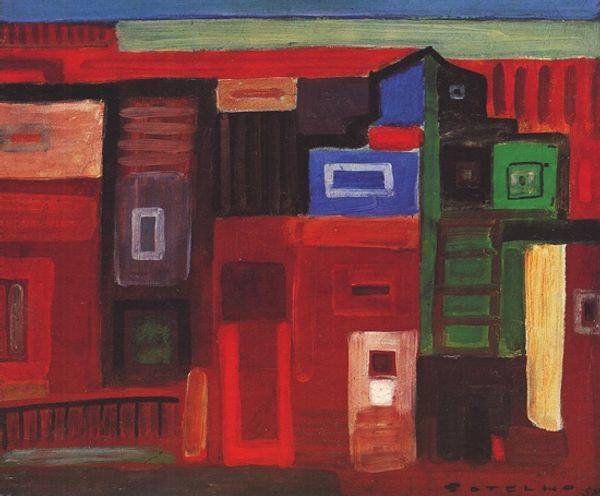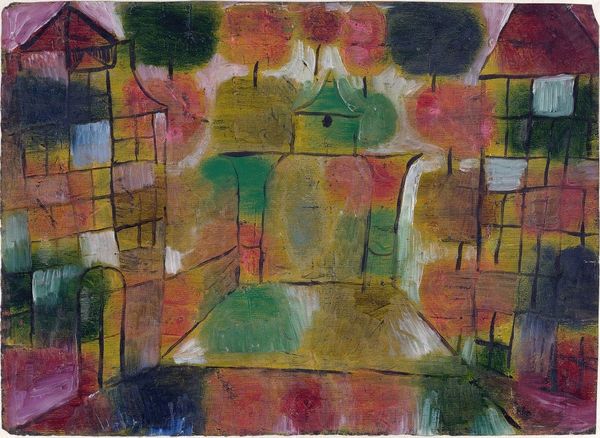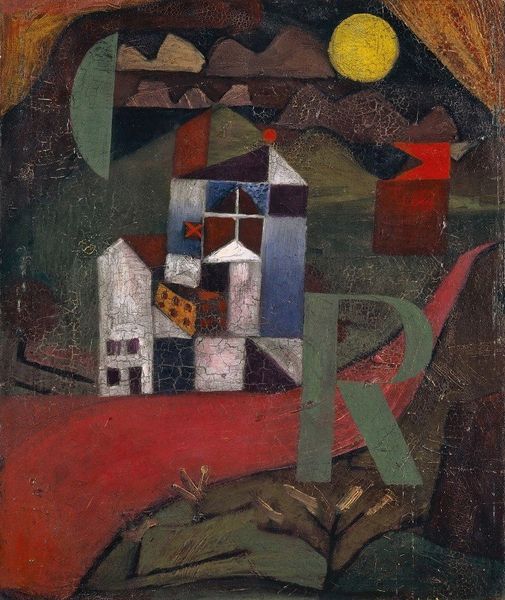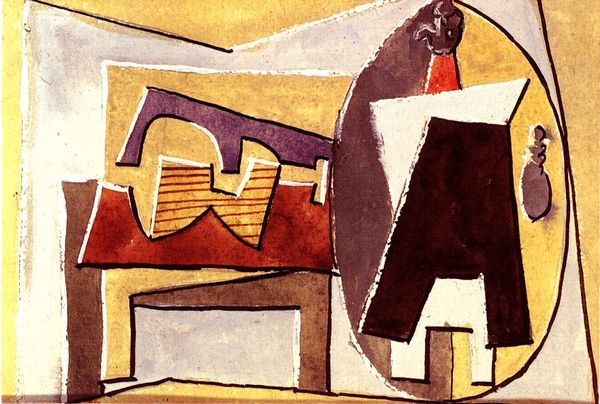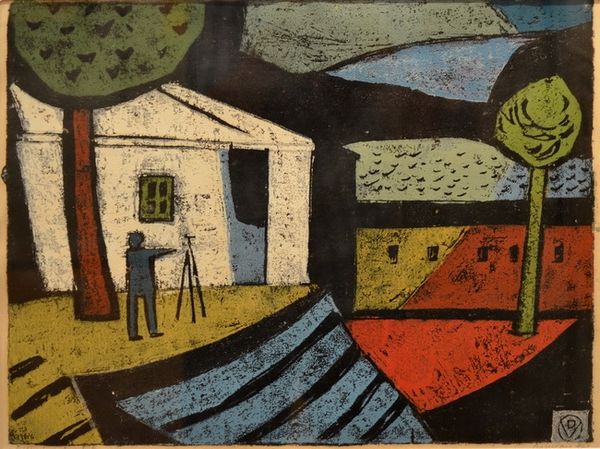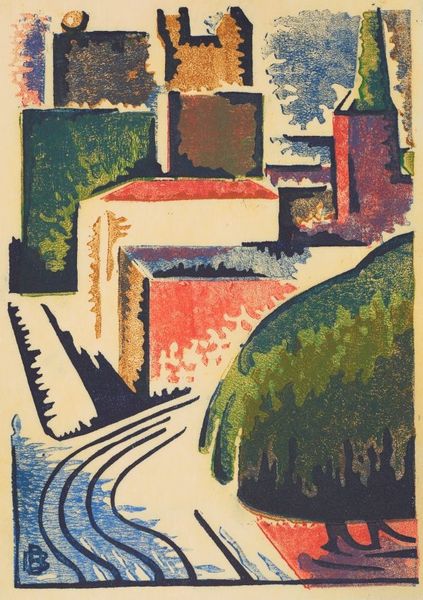
painting, oil-paint
#
cubism
#
painting
#
graffiti art
#
oil-paint
#
landscape
#
pop art
#
geometric
#
naive art
#
abstraction
#
modernism
Dimensions: 52 x 70 cm
Copyright: Public domain US
Curator: Pablo Picasso created this oil-paint rendering, titled “Landscape of Juan-les-Pins”, around 1920. Editor: It strikes me as quite playful. The composition, despite being rooted in Cubism, has a naive charm. It almost feels like a stage set. Curator: Given Picasso's engagement with Synthetic Cubism at this time, he would be dissecting visual elements into distinct forms. It seems less about faithful representation and more about exploring new relationships between materials, production and forms of building in the post-war. Editor: Absolutely. The fractured perspective disrupts any sense of traditional depth. But doesn't that very act redefine landscape art as an active socio-political space? Think about it: The rise of urbanization and modern leisure clashed with nature's supposed harmony in early 20th-century culture. Curator: I agree the fractured nature has a strong political sense for the era it came from, you can see that process in his previous works leading up to this one. He would dissect an image into its most necessary element, allowing only those specific markers that make up space to be represented in his paintings, creating a type of “graphic” version of life around him. Editor: It’s more than just geometric abstraction though, don't you think? Note the raw handling of the materials. There’s a very visible texture to the application. That roughness gives it a directness. As if challenging established ideas on labor, making or production for modern forms of artistry, as if trying to make an avant-garde argument. Curator: That is true, the materiality here gives the impression he wants to emphasize not only what a place or scene consists of in its minimal components, but that this minimal image can still convey a complete view of this place or even challenge others to perceive things beyond what meets the eye. Editor: This really gives me pause to wonder, what was the place for nature as a political symbol during the peak of industrialization, but more importantly what role could the artist fulfill to give visibility to their own modern perception of their environment? Curator: In the end, Picasso seems intent on disrupting any easy consumption of established artistic tropes, both materially and visually, don't you agree? Editor: Absolutely! I’ll certainly think differently the next time I encounter this painting. It reveals so much about the socio-cultural role landscape and leisure can play in shaping art.
Comments
No comments
Be the first to comment and join the conversation on the ultimate creative platform.
